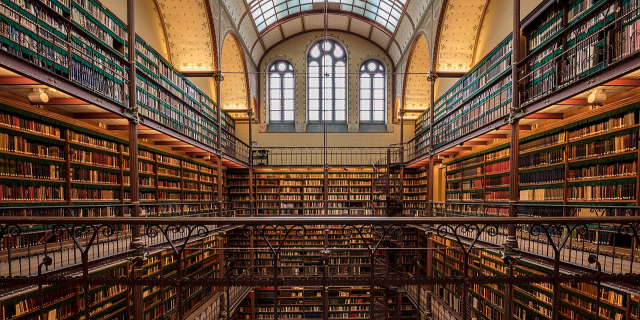The Homomonument is a memorial in the centre of Amsterdam, the capital of the Netherlands. It commemorates all gay men and lesbians who have been persecuted because of their sexual orientation. Opened on 5 September 1987, it was the first monument in the world to commemorate gays and lesbians who were killed by the German Nazi regime.
The monument takes the form of three large pink triangles made of granite, set into the ground, which together compose a larger triangle. It is on the bank of the Keizersgracht canal, near the historic Westerkerk church. The Homomonument was designed to "inspire and support lesbians and gays in their struggle against denial, oppression and discrimination."
During the Netherlands' annual Remembrance Day ceremony on 4 May, wreaths are laid on the monument to commemorate LGBT victims of persecution. A day later, on Liberation Day, the monument becomes the site of a street party.


The idea of perpetuating the memory of homosexual victims of World War II appeared at the very beginning of the organized Dutch gay movement. In 1961, activist Jef Last suggested a 'monument to the unknown gay': "No one knows how many there were, no statistics indicate how many of them were beaten to death in those camps or starved or otherwise succumbed. No flame burns for unknown homophiles".[1] However, this idea was not further developed until the 1970s, when the visibility and openness of the marginalized and stigmatized gay community became important political goals for many gay rights organizations.[2]
In 1970, a year before the complete decriminalization of homosexuality in the Netherlands,[3] a group of gay activists were arrested for trying to lay a wreath at the National Monument to the Victims of World War II on Dam Square, Amsterdam. The flowers were removed from the memorial by the police and declared insulting to the memory of the dead. This incident angered the LGBT community and catalyzed the struggle for the recognition of victims of repression. Throughout the 1970s, similar wreath-placing demonstrations were executed with varying success, as activists pushed for the inclusion of homosexuals in the public's collective memory of Hitler's "social purification" campaigns.[2]
In the spring of 1979, during a period of rapid growth of the gay rights movement, the initiative to build a monument to persecuted homosexuals entered a qualitatively new stage when the Homomonument Foundation was founded. Its main goal was the implementation of the memorial project.[4] One of the founders of the fund was Pacifist Socialist Party member Bob van Schijndel. Pointing to the fact that a monument to the Romani victims of the Nazi genocide was opened in Amsterdam in 1978, van Schijndel proposed a similar memorial which would be dedicated to the homosexuals who suffered during the Nazi rule.[1] The founders of the fund also included representatives of the Labour Party, the People's Party and the Christian Democratic Party of the Netherlands.[5]
In 1980, artists were invited to submit designs and a jury was assembled consisting of experts in the fields of art and design. The following year, out of 137 designs submitted to the competition, the jury chose the design by Karin Daan.[6] With the triangle on the water as its central point, Daan expanded the design to make her work as monumental as possible without disrupting its surroundings. The government of Amsterdam allocated a place for the erection of the monument, but construction did not begin for another seven years. Many organizations and individuals made donations for the monument, with individual contributions from the Dutch Parliament, the government of Ruud Lubbers, the city of Amsterdam and the province of North Holland.[7]
The idea of creating a monument was pointedly criticized by a number of political and public figures, who either did not recognize the fact of repression, considering the persecution of homosexuals to be legal, or argued that the creation of a monument to a separate small group was unjustifiable. Former Foreign Minister of the Netherlands Joseph Luns compared homosexuals to kleptomaniacs. In opposition to him, supporters of the monument noted that its construction would not make sense if there were no people in society who caused suffering to gays and lesbians, complicating their lives.[8][9] The Daan design also drew criticism from some gay activists, who wanted the monument to have a more imposing design.[10][11]
The first stone was laid on 28 April 1987, at Westermarkt.[7] The opening ceremony of the Homomonument took place on 5 September 1987. It became the first gay monument of its kind in the world.[6][1] Because of this, the Netherlands became known as the most tolerant Western nation,[8] since the act of erecting a monument meant the recognition of the injustice of the past.[2]
































Add new comment